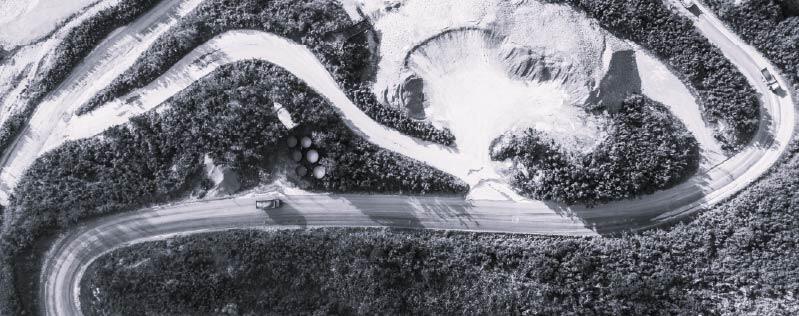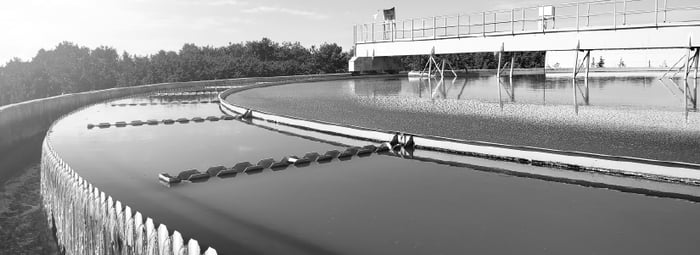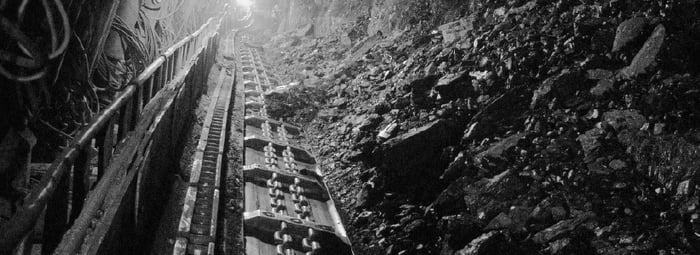
In this week’s blog we are going to explore Biomining what it is and how this alternative to traditional mining works, learning how this process extracts metals and minerals from lower-grade rock ores.
There has been a shift in the mining industry to make the most of the current resources and utilising lower-concentration ores. This shift is being influenced by two related trends. First, the depletion of many high- grade ore deposits has led to exploiting the lower-grade deposits which can’t be processed with conventional methods. Secondly there is an increase in demand for these metal types with the advancement of technologies to produce electric vehicle and electronic devices.
What is Biomining?
Biomining (or bioleaching) is a process that extracts valuable metals from rock ores with microorganisms/microbes such as bacteria and archaea. This method can also be used to clean up areas with large volumes of metals. This method is an alternative to traditional mining and is more environmentally friendly than conventional methods. The process relies on microorganisms that can oxidise and solubilise metals from mineral ores.

Biomining Processes
Biomining presents the opportunity to process low-grade ores and make closed mines or uneconomic mineral deposits useful, by extracting the valuable metals and minerals. The microbes used in microbial mining are acidophilic, which means they thrive in acidic environments. Obtaining energy by oxidising metal sulphides such as iron, copper, and zinc sulphides within the ore. The oxidation process released metal ions into the solutions and makes it easier to extract and recover the metals.
Heap leaching
This process involves ore being crushed and stacked onto a heap (an impermeable linen pad). This part is crucial so when the acid is poured over the ore, it does not seep through. The acid then separates metals like gold from the rock.
Dump leaching
This technique is like heap leaching and requires the ore to be soaked in an acid solution to separate the minerals. The process differs as it is dumped intact, where in heap leaching is crushed and stacked.
Agitated leaching
This process involves extracting the minerals from ores by dissolving them in a solvent. Miners place the ore in a tank with a solvent to agitate the mixture to speed up the reaction. Crushed rocks are placed not aa large vat and shaken to distribute the material and speed up the process.
The processes vary from taking days to months and is typically slower than conventional mining methods. Dump and leaching methods are the oldest form of biomining techniques but agitated leaching is being used for minerals that are more resistant to leaching, such as copper sulphides.
Metals that are currently Biomined
The metals are more commonly biomined include copper, nickel, uranium, silver, cobalt, zinc, and gold as they are typically found in sulfidic minerals. Microbes are particularly efficient at oxidising sulfidic minerals and converting metals such as iron and copper into forms that dissolve easily.
Advantages of Biomining
- Biomining is lower cost and more environmentally friendly than conventional mining techniques, as it produces less waste products and reduces the environmental impact typically associated with mining.
- The process can operate at lower temperatures which reduces the energy required.
- IT is an innovative and eco-friendly method to extract valuable metals from ores via microbes in metal solubilisation.
Biomining Drawbacks
- Biomining takes longer to produce the same volume of metals as conventional mining processes.
- The process can only work in certain environments, as it requires specific pH levels, temperatures, and nutrients. In the wrong location the process will be less effective.
- Like the environment, specific microbes are required to target the metals, which limits the types of metals that can be mined with this method.
The Future of Biomining
The metals and minerals that are extracted during the biomining process are important materials for the technology industry. As demand for products increases that relies on these minerals, this puts more pressure on mining operations to extract the metals. Biomining offers a solution to extract these valuable resources in both an environmentally sustainable method, while being economical.
We hope you enjoyed reading this week’s blog and learnt something new. Make sure that you are subscribed to our latest news, so you don’t miss out on any of our new posts. Feel free to share the blog with others who may enjoy it too. Why not leave a comment in the section below and let us know what you’d like to read about next time.
Related Articles

Tips & Tricks
Wastewater Treatment- Mining

Tips & Tricks
The Future Of Coal
Don't Miss Out On Our Updates
Sign up and Join Our Newsletter Today

